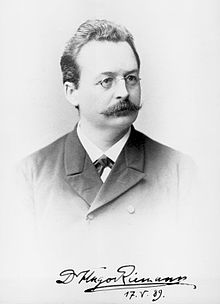A theory of tonal harmony developed by Hugo Riemann according to which all harmonies can by analyzed as having one of three functions: tonic, dominant, and subdominant (designated T, D, and S, respectively, in analyses of this type). Scale degrees II, III, and VI are often interpreted as the relative minors of IV, V, and I respectively, and thus as having the functions S, D, and T. III can also function as the “upper relative” of V and thus have the function D, as does VII. The letters T, D, and S are added to in various ways to indicate chromatic alteration and the addition of dissonant tones. The term functional harmony is sometimes loosely applied to tonal harmony in general as it is understood in prevailing methods of *harmonic analysis, which regard each of the seven diatonic scale degrees as having a separate function.
Monthly Archives: January 2015
familiar style
[It. stile familiare]. A style employing four-part vocal, syllabic, *homorhythmic texture such as characterizes simple hymn settings or *falsobordone. The term was used in the 16th century and was given renewed currency by Giuseppe Baini (1775-1844), the biographer and editor of Palestrina.
countertenor
countersubject
gapped scale
A scale used in one piece, derived from some tone system, but omitting some of that system’s tones. The term is also used (less appropriately) to describe scales that by chance use parts of the diatonic system, e.g., anhemitonic pentatonic scales.
paean
exposition
(1) In *sonata form, the first major section, incorporating at least one important modulation to the dominant or other secondary key and presenting the principal thematic material. (2) In a *fugue, the statement of the subject in imitation by the several voices; especially the first such statement, with which the fugue begins.
soutenu [Fr.]
acclamation
An elaborate musical salutation addressed to the Byzantine emperor, his family, the Patriarch, and other dignitaries of church or state. Known also as Euphymia (“song of praise”) and Polychronion, it wished the personage “many years.” Musical documents preserving acclamations date only from the 14th century, but according to written tradition (De ceremoniis, ii, 19) the practice is much older. Acclamations may have been used as models for the Carolingian Laudes regiae of the late 8th century. Apparently the performance was antiphonal, with two groups of singers: kraktai at secular ceremonies (sometimes accompanied by instruments) and psaltai on religious occasions. Each group was led by a praipositos or precentor, respectively.
elegy
(1) A sorrowful or melancholy poem, especially one of mourning for someone dead. (2) A musical work of similar character, whether a setting of such a open or an instrumental work. Other terms for works of mourning include *lament, *planctus, *tombeau, *apothéose, and *dump.





